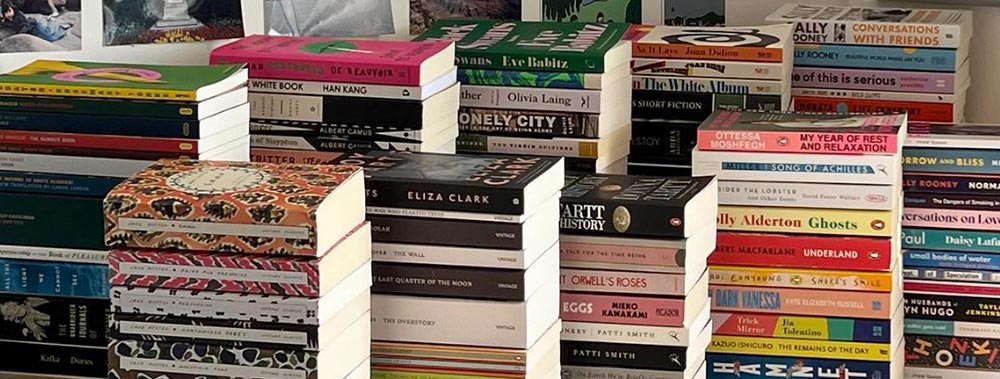A Thousand Splendid Suns: Summary, Plot, Characters, Literary Analysis & More
“A Thousand Splendid Suns” is a novel by Khaled Hosseini, first published in 2007. This novel stands as one of Hosseini’s most critically acclaimed and beloved works.
Hosseini narrates the lives of two Afghan women, Mariam and Laila, whose paths intertwine amidst the turbulent backdrop of Kabul, spanning from the Soviet invasion to the rise of the Taliban regime.
The story delves into themes such as forced marriages, the resilience of Afghan women, and the enduring power of friendship.
Mariam’s tragic journey, from being illegitimate and oppressed to her unexpected alliance with Laila, exemplifies the unlikely friendships forged in the face of adversity.
As Rasheed, a malevolent figure, forces Laila into a perilous situation, the two women’s bond becomes a beacon of hope in a war-torn Afghanistan.

A Thousand Splendid Suns navigates themes of female solidarity, the enduring strength of the human spirit, and the devastating impact of war on innocent lives.
Table of Contents
Summary The Plot Characters Key Themes Genres Language used Literary devices Summing upThe Plot
In “A Thousand Splendid Suns,” Khaled Hosseini crafts a gripping narrative centered around Mariam and Laila, two Afghan women whose lives are deeply entwined by circumstances beyond their control.
Mariam’s life takes a tragic turn when she is forced to marry Rasheed, a cruel and oppressive man. Meanwhile, Laila’s life is shattered as Rasheed coerces her into marriage.
Amidst the backdrop of war-torn Afghanistan, the novel explores themes of forced unions, survival, and the strength of the human spirit. As Mariam’s despair intensifies, she reaches a pivotal moment when she takes the drastic step of killing Rasheed to protect Laila.
The term “splendid suns” symbolizes hope and resilience, providing a glimmer of light in their darkened lives. Abdul Sharif, another character, adds complexity to their intertwined fates.
Rasheed’s attempt to strangle Laila serves as a harrowing moment, but it is their enduring friendship and determination that enables them to overcome his brutality, ultimately weaving a tale of triumph in the face of adversity.
Characters
Each character within this novel faces trials and tribulations that shape their destinies and relationships.
Mariam
Mariam, an illegitimate child, endures a life marked by oppression and forced marriage to Rasheed.
Her transformation from a submissive victim to a determined protector and friend is a central theme. Her pivotal act of killing Rasheed liberates her from his tyranny.
Laila
Laila, a resilient young woman, becomes Rasheed’s second wife after her family’s tragic demise.
Her bond with Mariam evolves from initial tension to an unbreakable sisterhood. Laila’s endurance and hope symbolize the strength of Afghan women.
Rasheed
Rasheed, a menacing figure, marries both Mariam and Laila.
He embodies oppression, using violence and control to maintain dominance. His eventual demise at Mariam’s hands reflects the consequences of his cruelty and brutality.
Abdul Sharif
Abdul Sharif, a character intertwined with Mariam and Laila’s lives, plays a pivotal role. He is connected to their past and represents the complexities of Afghan society.
His presence adds depth to the narrative, highlighting the impact of history and relationships.
Aziza
Aziza, the illegitimate daughter of Laila and Tariq, symbolizes hope and the possibility of a brighter future.
Her existence challenges traditional norms and underscores the resilience of the female characters. Aziza’s presence serves as a source of inspiration and strength in their tumultuous world.
Key Themes
In “A Thousand Splendid Suns” by Khaled Hosseini, several powerful themes are interwoven into the narrative.
These include resilience and female solidarity, love and sacrifice, and the pervasive presence of injustice and oppression.
These themes form the emotional core of the novel, shaping the characters’ destinies.
Resilience and Female Solidarity
The novel prominently explores the theme of resilience in the face of adversity, exemplified by Mariam and Laila. Mariam’s act of killing Rasheed to protect Laila is a poignant manifestation of their strength.
Throughout the story, these women nurse each other back to health, both physically and emotionally, and their unbreakable bond underscores the power of female solidarity.
Love and Sacrifice
Love and sacrifice are recurring themes in the novel.
Tariq’s unwavering love for Laila, despite the challenges they face, demonstrates the enduring nature of love.
Mariam’s ultimate sacrifice in killing Rasheed to protect Laila underscores the lengths to which one is willing to go for love and friendship.
Injustice and Oppression
The theme of injustice and oppression is pervasive, with Rasheed’s abusive behavior symbolizing the broader mistreatment of Afghan women.
Mariam’s act of killing Rasheed represents a symbolic rebellion against the oppressive social norms and power structures that govern their lives.
Genres in A Thousand Splendid Suns
In “A Thousand Splendid Suns” by Khaled Hosseini, the narrative encompasses multiple genres, including historical fiction, drama, and romance.
These genres converge to create a compelling and emotionally charged story set against the backdrop of Afghanistan’s tumultuous history.
Historical Fiction
The novel belongs to the historical fiction genre as it provides a vivid portrayal of Afghanistan’s tumultuous history, including the Soviet invasion and the rise of the Taliban regime.
These historical events serve as a backdrop that shapes the characters’ lives, adding depth and context to the narrative.
Drama
“A Thousand Splendid Suns” can be classified as a drama due to its intense character-driven storyline.
The conflicts, such as Rasheed forcing Laila into marriage and Mariam’s act of killing him, create emotional tension and drive the plot forward.
The characters’ struggles and relationships form the core of the dramatic narrative.
Romance
Romance is a genre element present in the novel, particularly through the love story between Laila and Tariq.
Tariq’s unwavering love for Laila, even in the face of separation and hardship, adds a romantic dimension to the narrative.
Their love story is a source of hope and inspiration amidst the challenging backdrop of Afghanistan’s history.
Language used in A Thousand Splendid Suns
Khaled Hosseini’s writing style in “A Thousand Splendid Suns” is a masterful blend of evocative language and poignant storytelling.
He employs rich, descriptive prose to transport readers to the war-torn streets of Kabul, vividly painting a picture of the novel’s setting.
The author’s language effectively conveys the complex emotions experienced by the characters.
When Tariq tells Laila of his enduring love, Hosseini’s words resonate with passion and sincerity, immersing readers in their heartfelt connection.
Similarly, when Mariam kills Rasheed, the prose takes on a visceral quality, capturing the intensity and desperation of the moment.
Literary devices in A Thousand Splendid Suns
The author employs a wide range of literary devices to enrich the storytelling experience.
Through intricate character development, he utilizes symbolism and metaphor to convey profound themes.
For instance, the character Rasheed forces Laila into a situation that symbolizes the oppression faced by Afghan women, which serves as a metaphor for the broader societal struggles.
Additionally, Mariam’s role as a nurse (Mariam nurses people back to help) is not only a literal one but also a symbol of healing, resilience, and nurturing, highlighting the power of compassion amidst adversity.
Similes
When Laila agrees to marry Rasheed, her feelings are likened to a bird in a cage, evoking a vivid image of her sense of entrapment and powerlessness. This simile deepens the reader’s empathy for her plight.
Similarly, the metaphorical comparison of Tariq’s child to “a ray of sunshine” amidst the darkness of their lives illustrates the profound hope and joy this new life brings, allowing readers to connect emotionally with the characters.
When Rasheed punishes, his anger is described as “hot as a flame,” conveying the intensity of his brutality.
These similes enrich the storytelling, making it more immersive and evocative, allowing readers to feel the characters’ emotions and experiences on a visceral level.
Metaphors
When Mariam discovers something, her journey of revelation is akin to peeling back layers of an intricate puzzle, allowing readers to appreciate the complexity of her character and the secrets she uncovers.
Mariam wearing something becomes a metaphorical reflection of her evolving identity and the different roles she takes on throughout the story, from a submissive daughter to a protector. It symbolizes her transformation and resilience in the face of adversity.
The act of teaching Mariam represents a transfer of knowledge and empowerment, emphasizing the importance of mentorship and shared wisdom. Mariam’s decisions and Laila’s learning process are metaphors for personal growth and the enduring human capacity for change.
As Mariam walks, her physical journey mirrors her internal journey, with each step representing her progress toward self-discovery and a sense of agency. Hosseini’s use of metaphors enriches the narrative, allowing readers to delve deeper into the characters’ inner worlds and the complexities of their experiences.
Analogies
When Mariam wears different identities like “layers of clothing,” it serves as an analogy for her multifaceted character, highlighting how societal expectations and personal experiences shape her.
The relationship between Mariam and Rasheed, where he teaches her like “a reluctant pupil,” is an analogy for the power dynamics in their marriage, illustrating the stark imbalance of authority. Mariam’s decisions mirror a crossroads, analogous to pivotal moments in life when choices shape one’s destiny.
Laila’s learning process, akin to “a kite in the wind,” symbolizes her adaptability and resilience.
The analogy of “two women bound by a common adversary” encapsulates the profound connection between Mariam and Laila.
The reference to “The Kite Runner” also serves as an analogy to Hosseini’s earlier work, linking themes of redemption and sacrifice.
Overall, these analogies enrich the narrative by providing readers with relatable imagery to understand the complexities of the characters’ experiences and relationships.
Imagery
Through the author’s evocative descriptions, readers can feel the scorching Kabul sun, hear the distant echoes of kite runners in the clear azure sky, and taste the sumptuous flavors of traditional Afghan dishes.
The dusty streets of Kabul, the oppressive walls of Rasheed’s home, and the vibrant Herat come alive with sensory experiences, making readers feel like they are walking alongside Mariam and Laila on their tumultuous journey.
This imagery not only adds depth to the setting but also intensifies the emotional impact of the characters’ trials and triumphs.
Symbolism
Mariam’s decision to take control of her destiny and protect Laila becomes a symbol of defiance against the oppressive patriarchal norms in Afghan society. Laila’s learning process represents the resilience and adaptability of Afghan women in the face of adversity.
Father Jalil’s presence, though limited, symbolizes the abandonment and betrayal felt by the two main characters, highlighting the theme of broken familial bonds.
The tragic act of killing Laila’s parents is a symbol of the devastating consequences of war and conflict on innocent lives. Rasheed’s payment for a wedding dress is symbolic of the superficiality and cruelty of his character, as he seeks to control and dominate.
These symbols interwoven throughout the narrative add layers of meaning and depth to the story, underscoring the novel’s themes of survival, resilience, and the enduring strength of the human spirit.
Personification
Personification is subtly woven into the narrative, adding depth to both the characters and the setting. For instance, when Jalil’s wives make the heart-wrenching decision to leave Kabul, the city itself seems to embody a character with a life of its own, reflecting the sorrow and turmoil of its inhabitants.
As Laila grows and matures, Kabul’s transformation over time is personified, mirroring her own journey of resilience and adaptation.
The city’s evolution becomes intertwined with Laila’s development, highlighting the interplay between the character and her surroundings.
Additionally, Tariq, a pivotal character, takes on a larger-than-life presence as he becomes Laila’s savior and protector. His actions personify the strength and unwavering support he offers, making him an integral part of Laila’s life.
These instances of personification contribute to the novel’s rich tapestry, blurring the lines between character and setting, and immersing readers in the emotional and geographical landscape of Afghanistan.
Hyperbole
When Mariam teaches herself to read, the author utilizes hyperbole to convey the immense difficulty she faces, painting a vivid picture of her determination and the immense obstacles she must overcome.
Mariam decides to protect Laila with her life and that is portrayed with hyperbolic intensity, emphasizing the gravity of her choice.
Similarly, Laila’s learning experiences in the midst of war and adversity are exaggerated to highlight the resilience and adaptability of Afghan women.
As Mariam and Laila attempt to take the children from Kabul, the sense of danger and risk is magnified through hyperbole, underscoring the perilous nature of their journey.
These exaggerated elements heighten the emotional stakes, drawing readers deeper into the characters’ struggles and making “A Thousand Splendid Suns” a gripping and emotionally charged narrative.
Irony
One notable form of irony emerges when Father Jalil, whom Laila has idolized throughout her life, is revealed to be less than the perfect figure she had imagined. This situational irony subverts her expectations and shatters her idealized image of him.
Another form of irony arises when we see how Rasheed paid for a wedding dress for Aziza, Mariam and Laila’s daughter. This unexpected act of generosity from a character known for his cruelty highlights the multifaceted nature of his character, adding depth and complexity to the story.
Additionally, the dramatic irony is evident when he teaches Mariam to read, offering a glimmer of hope and empowerment in her life, only for her newfound skills to be tragically overshadowed by the harsh realities she faces.
This irony underscores the pervasive challenges and injustices faced by Afghan women, despite their resilience and efforts to improve their lives. Finally, the most poignant irony emerges when Laila learns that the tutor is dead as she had hoped to receive an education from him.
This twist of fate highlights the fleeting nature of opportunities and the cruel irony of life in a war-torn society. These various forms of irony add depth and nuance to the narrative, underscoring the complexities of the character’s experiences and the harsh realities of their world.
Juxtaposition
The stark juxtaposition of Mariam’s humble background and Rasheed’s oppressive character intensifies the sense of Mariam’s entrapment within her marriage.
Her desperate actions to save Laila’s life stand in sharp contrast to Rasheed’s cruelty, emphasizing the stark divide between compassion and brutality.
Laila’s family, with their loving and supportive nature, serves as a striking juxtaposition to the dysfunctional household she enters after her parents’ tragic deaths. This contrast accentuates the impact of her newfound circumstances on her life.
Mullah Faizullah, the religious figure who initially teaches Mariam to read, represents a juxtaposition between education and traditional values, showcasing the tension between progress and conservatism in Afghan society.
These juxtapositions throughout the novel not only enhance the narrative’s depth but also invite readers to reflect on the complexities of the character’s lives and the broader societal contrasts they navigate.
Paradox
In “A Thousand Splendid Suns” by Khaled Hosseini, paradoxical situations and statements enrich the narrative, adding layers of complexity and meaning to the story.
One such paradox lies in the fact that while Mariam lives a life marked by suffering and oppression, her existence is paradoxically defined by moments of extraordinary resilience and courage. Her enduring spirit in the face of adversity is paradoxical to her seemingly powerless position.
Similarly, when Mariam leaves her oppressive marriage to Rasheed, it’s both a moment of liberation and sorrow. This paradox underscores the complex emotions tied to her decision.
Laila receives kindness and support from unlikely friendship, given the challenging circumstances, highlighting the paradox of compassion thriving amidst a backdrop of conflict and cruelty.
The paradox of Rasheed’s death serves as both a moment of resolution and tragedy, as it represents the culmination of his cruelty and the end of his reign of terror, yet it also signifies the loss of life.
Allegory
While “A Thousand Splendid Suns” does not present a full-fledged allegory, certain elements can be interpreted symbolically.
The character of the widowed shoemaker represents the plight of many Afghan citizens who face hardship and loss in the wake of war and conflict, serving as a microcosm of the broader suffering experienced by the Afghan people during this turbulent period.
Additionally, Laila’s pregnancy with Tariq’s child can be seen as a symbol of hope and resilience amidst adversity, embodying the idea that new life and possibilities can emerge even in the darkest of times.
These elements, while not allegorical in the strictest sense, contribute to the novel’s thematic richness and provide insights into the broader experiences of Afghan society during this tumultuous era.
Repetition
In “A Thousand Splendid Suns” by Khaled Hosseini, repetition serves as a powerful literary device that reinforces the book’s themes and emotional impact.
The repetitive themes of loss and suffering are poignantly reflected in the characters’ experiences, especially Noor and Ahmad who, upon their return to Kabul, face the relentless cycle of conflict and danger. The repetition of this cycle underscores the destructive nature of war and the futility of their efforts.
Furthermore, the repetition of the phrase “sentenced to death” throughout the narrative emphasizes the brutal and oppressive regime under which the characters live, heightening the sense of dread and powerlessness.
This repetition underscores the novel’s themes of injustice and the relentless struggle for survival in war-torn Afghanistan.
The Use of Dialogue
Dialogue is a powerful tool that not only advances the plot but also vividly conveys character traits, themes, and narrative tension.
The conversations between Laila and Mariam reveal the evolution of their relationship from initial tension to a deep and unlikely friendship, highlighting the theme of female solidarity amidst adversity.
The dialogue also serves as a vehicle to convey the emotional weight of pivotal moments, such as Laila revealing that she is pregnant with Tariq’s child and Mariam’s decision to send Aziza to safety.
These conversations add layers of complexity to the characters, intensify the narrative’s emotional impact, and illuminate the broader themes of love, sacrifice, and resilience.
Word Play
In “A Thousand Splendid Suns” by Khaled Hosseini, wordplay techniques such as puns and double entendre are not central to the narrative.
The novel primarily relies on straightforward language to convey its powerful themes and character dynamics, focusing more on the emotional depth of the story rather than playful linguistic elements.
Parallelism
The phrases “to marry Rasheed” and “Mariam kills Rasheed” exemplify a stark contrast in Mariam’s life, illustrating her journey from hope to despair.
Additionally, “Mariam nurses her back to health” and “Mariam wears” reflect the transformation of her role from victim to protector.
These instances of parallelism contribute to the novel’s structural coherence and underline the evolution of characters and themes.
Rhetorical Devices
Rhetorical devices like rhetorical questions and parallelism are employed to create a persuasive and emotionally charged narrative. Rhetorical questions, such as “What kind of mother would I be if I didn’t protect my own?” underscore the characters’ inner turmoil and dilemmas, engaging readers on a personal level.
Parallelism, seen in repeated phrases like “to marry Rasheed” and “Mariam kills Rasheed,” intensifies the emotional impact, urging readers to grapple with the characters’ complex choices and the broader themes of love, sacrifice, and resilience.
These devices contribute to the novel’s persuasive power, drawing readers deeper into the characters’ struggles and dilemmas.
A Thousand Splendid Suns: FAQs
In this section, we provide concise answers to common questions about Khaled Hosseini’s novel, providing readers with insights, summaries, and analysis of this compelling work.
What is the message that “A Thousand Splendid Suns” sends?
“A Thousand Splendid Suns” conveys messages of resilience, female solidarity, and the enduring human spirit in the face of war and oppression, emphasizing the capacity of love to transcend suffering.
Is there a reason why Laila agrees to marry Rasheed?
Laila agrees to marry Rasheed primarily to protect herself and her family from the dangers of a war-torn Afghanistan. She believes this is the only way to ensure their survival.
What happens after Mariam kills Rasheed?
After Mariam kills Rasheed, she and Laila dispose of his body together. They then take steps to rebuild their lives and raise Laila’s children, finding strength in their newfound bond and friendship.
Summing up: A Thousand Splendid Suns: Summary, Plot & More
As you can see from this “A Thousand Splendid Suns” summary, Khaled Hosseini creates a poignant tale of Mariam and Laila, which unfolds against the backdrop of a war-torn Afghanistan. It is here that love, sacrifice, and resilience are tested to their limits.
The narrative skillfully navigates themes of female solidarity, the enduring strength of the human spirit, and the devastating impact of war on innocent lives.
Through vivid imagery, rich character development, and a compelling exploration of complex relationships, Hosseini creates a moving and emotionally charged narrative that leaves an indelible mark on readers.
This work serves as a powerful reminder of the resilience and courage of individuals amidst the harshest of circumstances.
Other Notable Works by Khaled Hosseini
If you are interested in “A Thousand Splendid Suns” by Khaled Hosseini, you may be interested in other works by the author, including:
- “The Kite Runner” – Hosseini’s debut novel, which explores themes of friendship, betrayal, and redemption in Afghanistan.
- “And the Mountains Echoed” – A multi-generational family saga that spans continents and delves into the interconnected lives of its characters.
- “Sea Prayer” – A poignant illustrated book that serves as a letter from a father to his son, reflecting on the refugee crisis in Syria.
These works by Khaled Hosseini continue to captivate readers with their compelling narratives and exploration of universal themes.







